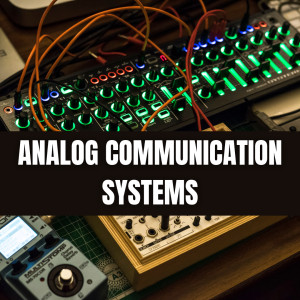Electronic Measurement and Instrumentation
13.98$
About the course
Electronics Measurement and Instrumentation covers basics of both types of instruments – Analog and Digital Instruments. After covering the basics, we move onto learning Measurement Techniques of three most elementary electrical elements – Inductance, Capacitance and Resistance. Towards the end of the course, we learn about CRO and its applications followed by Instrumentation Calibration Techniques.
What will you learn?
The complete online syllabus of this course comprises 5 Learning Modules | 143 Topics of Learning | 7.15 Hours of Learning | 41 Assessments
Module
- Introduction to Units and Measurement Errors
- Analog and Digital Instruments Basics
- Resistance, Inductance and Capacitance Measurements
- Cathode Ray Oscilloscope
- Instrumentation Calibration
Topics of Learning
- Fundamental Units
- Unit of Force, Work Energy, Power
- Metric Prefixes
- Units of Current and Charge
- Emf, Potential Difference, and Voltage
- Resistance and Conductance
- Magnetic Flux and Flux Density
- Inductance and Capacitance
- SI Temperature Scales
- Other Unit Systems
- Standard Classifications
- Gross Errors and Systematic Errors
- Absolute Errors and Relative Errors
- Accuracy, Precision Resolution, and Significant Figures
- Sum, Difference, Product and Quotient of Quantities
- Arithmetic Mean Value
- Deviation, Standard Deviation and Probable error
- Permanent Magnet Moving Coil Instrument
- Galvanometer
- DC Ammeter
- DC Voltmeter
- Rectifier Voltmeter
- Rectifier Ammeter
- Series Ohmmeter
- Emitter-Follower Voltmeters
- Ground Terminals and Floating Power Supplies
- Voltmeter Range Changing and FET-Input Voltmeter
- Difference Amplifier Voltmeter
- Operational Amplifier Voltmeter Circuits
- Ohmmeter Function in Electronic Instruments
- Principle of Operation
- Current Measurement with Electronic Instruments
- Analog Electronic Multimeters
- High-Voltage, Current and RF Probe
- Ramp-Type Digital Voltmeters
- Dual-Slope-Integrator DVM
- Range Changing
- Basic Hand-Held Digital Multimeter
- Accuracy and High-Performance Hand-Held DMMs
- Bench-Type DMM and Additional features
- Comparison of Digital and Analog Multimeters
- Basic Frequency Meter
- Frequency Meter Accuracy
- UTP and LTP
- Effect of Noisy input Signal
- Basic digital Frequency Meter
- Measurement of Resistance
- Substitution Method
- Circuit
- Accuracy, Sensitivity
- Range of Instrument and Using a Wheatstone Bridge
- Four-Terminal Resistors and Kelvin Bridge
- Low Resistance Linear Ohmmeter and Micro-ohmmeter
- Voltmeter and Ammeter Method, and Guard Wire and Guard Ring
- Wheatstone Bridge Measurement of High Resistance
- Hand-Cranked Megohmmeter
- Voltage-Multiplying Circuit
- Battery-Powered Megohmmeters
- Q Factor of an Inductor and D Factor of a Capacitor
- Circuit and Balance Equations
- Balance Procedure and AC Bridge Sensitivity
- Series-Resistance Capacitance Bridge
- Parallel-Resistance Capacitance Bridge
- Inductance Comparison Bridge
- Maxwell Bridge
- Hay Inductance Bridge
- Measuring Small C, R and L quantities
- Digital R,L and R Measurements – Inductance and Capacitance Measurement
- Capacitance Measurement and Digital Multimeters
- Digital RCL Meter
- Q-Meter Operation
- Q-Meter Controls
- Residuals and Commercial Q-Meter
- Measuring Procedures
- Operation
- Triode Section, Focusing section, Deflection Section
- Screen and Brightness of Display
- Waveform Display
- Horizontal Sweep Generator
- Automatic time Base
- Construction
- Working
- Peak to Peak Voltage Measurement
- Probes
- Attenuator Probes
- Active Probes
- Sensitivity, Voltage Measurement accuracy
- Frequency Response
- Time Base Management
- Rise Time Measurement
- Need for a Time delay
- Delay Time Based System
- Waveform Sampling
- System Operation
- Circuits
- Expanded Mode Operation
- Digital Sampling
- Basic DSO Operation
- DSO Applications
- DC Voltmeter Calibration
- Deflection Instrument calibration and AC Instrument Calibration
- Ohmmeter Calibration and Wattmeter Calibration
- Digital Multimeters as Standard instruments
- Precision DC Voltage Source
- Voltage Calibrator
- Basic Potentiometer
- Potentiometer with Switched Resistors
- Potentiometer Calibration Methods-DC Ammeter Calibration
- DC Voltmeter Calibration
- Strip-Chart Recorder- Galvanometer Strip-Chart Recorder
- Potentiometric Strip-Chart Recorder
- X-Y Recorder
- Plotting Device Characteristics on an X-Y Recorder
- Plotters
- Digital Waveform
- Distortion Meter – Harmonic Distortion
- Distortion Meter – Rejection Amplifier
- Distortion Meter Block Diagram and Controls
- Spectrum Analyzer – Swept TRF Spectrum Analyzer
- Spectrum Analyzer – Swept Super heterodyne Spectrum Analyzer
- Spectrum Analyzer Controls and Specifications
- Digital Spectrum Analyzer
- Additional Waveform Analyzing Instruments
- Thermocouple Instruments – Thermocouples
- Thermocouple Ammeters and Voltmeters, and Thermocouple Bridge
- Peak Response Voltmeter
- True RMS Meters- Disadvantages of Average Instruments and Waveform Crest Factor, TRMS Meter Using Nonlinear Circuit
- Waveform with a dc Component, Thermocouple-Type True-rms Meter
- Low Level Voltmeter/Ammeter – Low Level Voltage Measurements, Chopper-Stabilized Amplifier
- Low Level Voltmeter/Ammeter – Electrometers and Guard Termin




